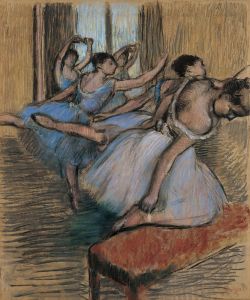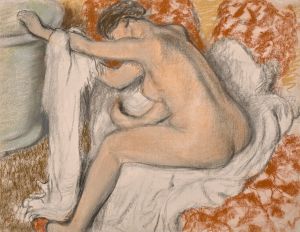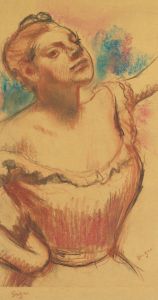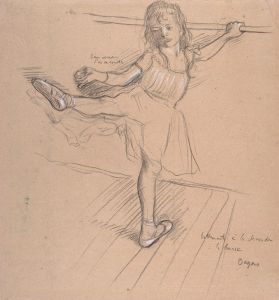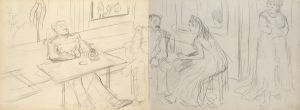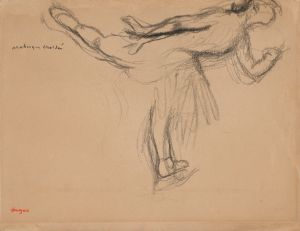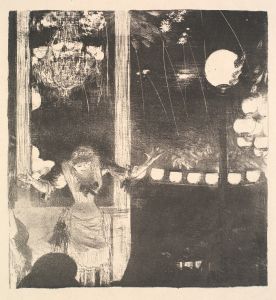
Study of a Ballet Dancer seen from the Back
A hand-painted replica of Edgar Degas’s masterpiece Study of a Ballet Dancer seen from the Back, meticulously crafted by professional artists to capture the true essence of the original. Each piece is created with museum-quality canvas and rare mineral pigments, carefully painted by experienced artists with delicate brushstrokes and rich, layered colors to perfectly recreate the texture of the original artwork. Unlike machine-printed reproductions, this hand-painted version brings the painting to life, infused with the artist’s emotions and skill in every stroke. Whether for personal collection or home decoration, it instantly elevates the artistic atmosphere of any space.
Edgar Degas, a prominent French artist associated with the Impressionist movement, is renowned for his depictions of dancers, capturing their grace and the nuances of their movements. One of his notable works is "Study of a Ballet Dancer seen from the Back," which exemplifies his fascination with the world of ballet and his innovative approach to composition and perspective.
Degas was born on July 19, 1834, in Paris, France, and he spent much of his career exploring themes related to modern life, with a particular focus on the ballet. His interest in ballet dancers was not merely in their performances but also in their rehearsals and the behind-the-scenes aspects of their art. This focus allowed him to explore the physicality and discipline of dance, as well as the fleeting moments of beauty and effort that define it.
"Study of a Ballet Dancer seen from the Back" is a testament to Degas's skill in capturing the human form and movement. The painting, as the title suggests, presents a ballet dancer viewed from behind, offering a perspective that is both intimate and observational. This angle allows viewers to appreciate the dancer's posture, the tension in her muscles, and the elegance of her form, all of which are characteristic of Degas's work.
Degas's technique in this piece, as in many of his works, involves a careful study of line and form. He often employed pastels, a medium that allowed him to achieve a delicate balance between drawing and painting. This choice of medium enabled him to create soft, layered textures that convey the subtle play of light on the dancer's body and costume. The use of pastels also allowed for a certain immediacy and spontaneity in his work, capturing the ephemeral nature of dance.
The composition of "Study of a Ballet Dancer seen from the Back" reflects Degas's interest in unconventional viewpoints and cropping, influenced by the advent of photography and Japanese prints. By choosing to depict the dancer from behind, Degas invites the viewer to consider the dancer's perspective, focusing on her preparation and the moments before or after a performance. This approach highlights the often unseen aspects of a dancer's life, emphasizing the dedication and hard work that underpin the art of ballet.
Degas's works, including this study, are celebrated for their ability to convey movement and emotion with economy and precision. His dancers are not idealized figures but are portrayed with a realism that acknowledges their humanity and the physical demands of their profession. This authenticity is a hallmark of Degas's art, setting him apart from many of his contemporaries.
Throughout his career, Degas produced numerous studies and paintings of dancers, each offering a unique glimpse into the world of ballet. "Study of a Ballet Dancer seen from the Back" is a part of this larger body of work, contributing to our understanding of Degas's artistic vision and his enduring legacy in the world of art. His ability to capture the essence of dance continues to resonate with audiences, making his work timeless and universally appreciated.








